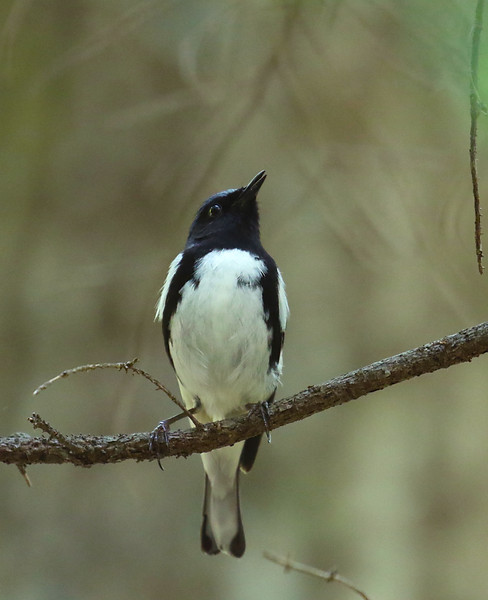Selected Publications

Butterflies at porch lights: Exploring nocturnal light visitation in butterflies using community science data from iNaturalist
Abstract: Artificial light at night (ALAN) is altering natural light conditions globally, with dramatic effects on insect behaviour. Flight-to-light behaviour is one of the most noticeable and ecologically significant impacts. Research has focused on nocturnal and crepuscular insect taxa, but diurnal insects also exhibit flight-to-light behaviour...
Deitsch JF, Cruz Huerta A, and Seymoure, B.
Insect Conservation and Diversity (2025).
https://doi.org/10.1111/icad.12826

Black-throated blue warblers (Setophaga caerulescens) exhibit diet flexibility and track seasonal changes in insect availability
Abstract: Changes in leaf phenology from warming spring and autumn temperatures have lengthened the temperate zone growing “green” season and breeding window for migratory birds in North America. However, the fitness benefits of an extended breeding season will depend, in part, on whether species have sufficient dietary flexibility to accommodate seasonal changes in prey availability. We used fecal DNA metabarcoding...
Kaiser SA, Forg L, Stillman AS, Deitsch JF, Sillett TS, and Clucas GV. Ecology and Evolution (2024).

Quantifying how natural history traits contribute to bias in community science engagement: a case study using orbweaver spiders
Abstract: Online citizen science platforms can be crucial to the scientific and regulatory community, but inherent biases based on organism traits can influence the likelihood of a species being reported and accurately identified. We explored how traits of orb weaving spiders impact data in iNaturalist, using the invasive Jorō spider as a case study...
Deitsch JF, Chuang A, Nelsen DR, Sitvarin MI, and Coyle DR. Citizen Science: Theory and Practice (2024).

Veni, vidi, vici? Future spread and ecological impacts of a rapidly-expanding invasive predator population
Abstract: Economic and ecological consequences of invasive species make biological invasions an influential driver of global change. Monitoring the spread and impacts of non native species is essential, but often difficult, especially during the initial stages of invasion. The Jorō spider, Trichonephila clavata (L. Koch, 1878, Araneae: Nephilidae), is a large-bodied orb weaver native to Asia, likely introduced to northern Georgia, U.S. around 2010. We investigated...
Nelsen DR, Corbit AG, Chuang A, Deitsch JF, Sitvarin MI, and Coyle DR. Ecology and Evolution (2023).
![Elasmia sp. [Notodontidae] (Hubbard Brook) 4.JPG](https://static.wixstatic.com/media/ed8b10_4e2dbe86e4034208b876e7b2b3d74e04~mv2.jpg/v1/fill/w_488,h_434,al_c,q_80,usm_0.66_1.00_0.01,enc_avif,quality_auto/ed8b10_4e2dbe86e4034208b876e7b2b3d74e04~mv2.jpg)
Artificial light at night increases top-down pressure on caterpillars: experimental evidence from a light-naive forest
Abstract: Artificial light at night (ALAN) is a globally widespread and expanding form of anthropogenic change that impacts arthropod biodiversity. ALAN alters interspecific interactions between arthropods, including predation and parasitism. Despite their ecological importance as prey and hosts, the impact of ALAN on larval arthropod stages, such as caterpillars, is poorly understood...
Deitsch JF and Kaiser SA. Proceedings of the Royal Society B (2023).

The Jorō spider (Trichonephila clavata) in the southeastern U.S.:
an opportunity for research
and a call for reasonable journalism
Abstract: Trichonephila clavata, also known as the Joro spider, was first discovered in Georgia, USA in 2014. Its arrival from Asia and subsequent range expansion across the southeastern U.S. has received much media coverage, spanning from factual to sensational. Here, we describe T. clavata's invasion potential and known invasive range, and review its biology, dispersal abilities, potential impacts, and management strategies...
Chuang A, Deitsch JF, Nelsen DR, Sitvarin MI, and Coyle DR.
Biological Invasions (2022).